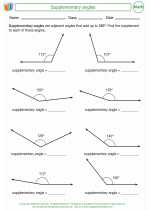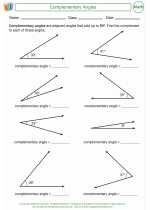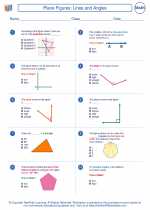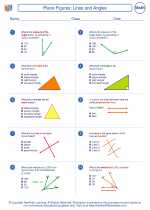Plane Figures: Lines and Angles -> ratio
Ratio
A ratio represents a comparison between two or more quantities. It can be written in the form a:b or a/b, where a and b are both non-negative numbers. Ratios are used to compare sizes, amounts, or quantities of different items, and they are often used in real-life situations such as cooking, finance, and engineering.
Understanding Ratios
To understand ratios better, let's consider an example. Suppose you have a bag of red and green marbles. If there are 3 red marbles and 5 green marbles, the ratio of red marbles to green marbles can be written as 3:5 or 3/5.
Equivalent Ratios
Ratios can be equivalent, meaning they represent the same comparison. To find equivalent ratios, you can multiply or divide both parts of the ratio by the same number. For example, the ratios 6:8 and 3:4 are equivalent because if you divide both parts of the first ratio by 2, you get the second ratio.
Ratio in Fraction Form
Ratios can also be expressed as fractions. When a ratio is written as a fraction, the numerator represents the first quantity being compared, and the denominator represents the second quantity. For instance, the ratio 2:3 can be written as the fraction 2/3.
Using Ratios to Solve Problems
Ratios can be used to solve various types of problems, such as finding a missing value in a proportion, scaling quantities up or down, and comparing different quantities. It's important to understand how to apply ratios in different scenarios to solve problems effectively.
Study Guide
- Understand the concept of ratio and how it represents a comparison between quantities.
- Learn to write ratios in the form a:b and as fractions a/b.
- Practice finding equivalent ratios by multiplying or dividing both parts of the ratio by the same number.
- Study how to use ratios to solve real-life problems, such as scaling quantities and finding missing values in proportions.
- Explore different examples and applications of ratios in various fields, such as cooking, finance, and engineering.
By mastering the concept of ratio and its applications, you'll be able to confidently solve problems that involve comparing and scaling quantities.
.◂Math Worksheets and Study Guides Seventh Grade. Plane Figures: Lines and Angles

 Activity Lesson
Activity Lesson
 Activity Lesson
Activity Lesson
 Worksheet/Answer key
Worksheet/Answer key
 Worksheet/Answer key
Worksheet/Answer key
 Worksheet/Answer key
Worksheet/Answer key
